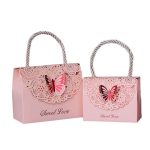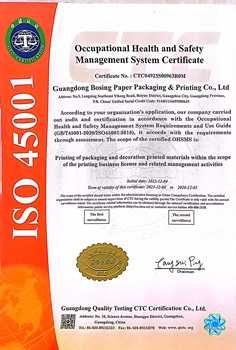In the bustling world of food industry innovations, one silent revolution often goes unnoticed – the evolution of food packaging box paperboard. While we marvel at new culinary creations and food trends, the humble paperboard box has been quietly transforming from a simple container into a sophisticated solution that protects our food, preserves our environment, and enhances our dining experience. This unsung hero of the food world deserves our attention and appreciation.
The journey of food packaging paperboard begins with its remarkable versatility. Modern paperboard isn’t just cardboard – it’s an engineered material designed specifically for food safety and preservation. Through advanced manufacturing processes, paperboard can be coated with food-safe barriers that protect against moisture, grease, and oxygen, ensuring that your favorite pizza stays crisp, your bakery items remain fresh, and your takeout meals maintain their quality from kitchen to table. This protective quality makes paperboard an ideal choice for everything from frozen foods to gourmet delicacies.
Environmental consciousness has become a driving force in packaging innovation, and paperboard stands at the forefront of sustainable solutions. Unlike plastic packaging that can linger in landfills for centuries, paperboard is biodegradable and comes from renewable resources. Many manufacturers now use recycled content and sustainable forestry practices, creating a circular economy where packaging materials can be reused and repurposed. The rise of compostable paperboard packaging represents a significant step toward reducing the food industry’s environmental footprint, allowing consumers to enjoy their meals with a clearer conscience.
Beyond functionality and sustainability, paperboard packaging serves as a powerful marketing canvas. The smooth, printable surface allows brands to create vibrant designs that tell their story and connect with consumers. From minimalist elegance to bold, eye-catching graphics, paperboard packaging becomes an extension of the brand identity. This visual appeal transforms ordinary food containers into memorable experiences, enhancing perceived value and strengthening brand recognition in a crowded marketplace.
The practical advantages of paperboard extend to logistics and storage efficiency. Lightweight yet sturdy, paperboard boxes stack neatly, optimizing space in delivery vehicles and storage facilities. Their structural integrity protects contents during transportation while remaining easy for consumers to handle and store. This efficiency translates to reduced shipping costs and lower carbon emissions, creating benefits that ripple throughout the supply chain from manufacturer to end consumer.
Innovation in paperboard technology continues to push boundaries. Smart packaging integrations, such as QR codes and augmented reality features, are becoming increasingly common, bridging the physical and digital worlds. Temperature-sensitive inks can indicate when frozen foods have thawed and refrozen, while antimicrobial coatings provide additional food safety measures. These advancements demonstrate how paperboard packaging is evolving from passive container to active participant in food preservation and consumer engagement.
As consumer preferences shift toward eco-friendly and convenient solutions, paperboard packaging stands ready to meet these demands. The material’s adaptability allows for creative designs that enhance user experience – easy-open features, resealable options, and compartmentalized sections for different food items. This focus on user-centered design demonstrates how paperboard packaging manufacturers are listening to consumer needs and responding with innovative solutions that make food enjoyment more convenient and enjoyable.
The future of food packaging paperboard looks brighter than ever, with ongoing research into even more sustainable materials and smarter functionalities. As technology advances, we can expect to see paperboard that’s not only more environmentally friendly but also integrated with digital capabilities that provide consumers with information about food origin, nutritional content, and preparation suggestions. This continuous innovation ensures that paperboard will remain a vital component of the food industry for years to come.
In conclusion, food packaging box paperboard represents the perfect marriage of tradition and innovation. It honors the timeless appeal of paper-based materials while embracing cutting-edge technology to meet modern demands. From protecting our food to preserving our planet, from enhancing brand stories to improving user experience, paperboard packaging proves that sometimes the most significant revolutions come in the simplest forms. The next time you receive a meal in a paperboard box, take a moment to appreciate the sophisticated engineering and thoughtful design that makes your dining experience possible.




Leave a Message